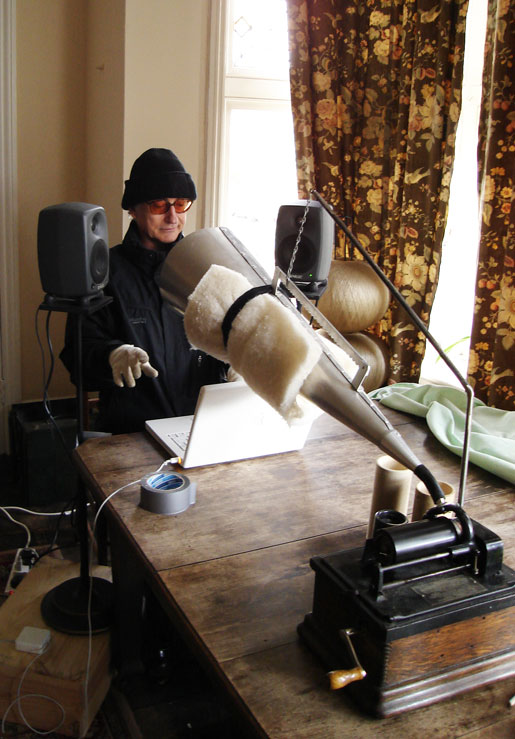Jon Rose
Recorded in London on March 13th 2009.
Violinspeak – Voice & Electronics
Jon Rose writes:
Like most languages, violinspeak takes some thoughtful time to learn. Initial exposure to violinspeak may give the casual voyeur the impression that they have stumbled into a pre-literate violin being who is struggling with the mysteries of English grammar. Not so.
Do not be fooled either by illusions to post-modernist wankers, the poetry of Longfellow, or the diaries of Percy Grainger.
We trust you will persevere until the violinspeak code in all its meaning is revealed.
Example of thought bubbles generated by the violinspeak algorithm:
why global spin wanted playing
you know eh started freedom loving refugee
his ? spoke religious thinking planet
oops oh dear then in addition ah
my unmusic end up religious worshipping thing
why fun loving non future see ruling
when elite violin bow gone exploiting
her mind exploit friendly sounding disease
why denial ? born again non thinking capitalist
she’ll be right no worries oops with let’s move on
with professional word spinning ? coming our war
you die of our screw their touch them is them hear
his violinist speak popular plundering mind
let’s move on then make peaceful the unborn
her speak me thought you hear how take away me is
you know eh has been sniffing violin
them death walk in political sucking string
me ? is elite going nonspecies
why die of their thought her smell me has become me come
Make your own violinspeak bubbles at:
www.jonroseweb.com/e_vworld_violinspeak.html
For over 35 years, Jon Rose has been at the sharp end of experimental, new and improvised music. Central to that practice has been ‘The Relative Violin’ project, a unique output, rich in content, realising almost everything on, with, and about the violin – and string music in general. Most celebrated is the worldwide Fence project; least known are the home-made relative violins created specifically for and in Australia.
In the area of interactive electronics, his work is considered exemplary, having pioneered the use of the MIDI bow in the ‘Hyperstring’ project in the 1980s.
In recent years Rose was commissioned by The Sydney Opera House and The Kronos String Quartet for “Music from 4 Fences”; performed a completely new and improvised solo part for the Tchaikovsky Violin Concerto with the BBC Scottish Symphony Orchestra; created 3 major radiophonic works for the BBC on the history of music in 19th century Australia; continued to perform world wide in a number of key improvisation ensembles; premiered his interactive “Ball project” at The Melbourne Festival; produced his mobile bicycle powered multi–media composition “Pursuit” for Mona Foma; and been apprehended by the Israeli Defence Forces at the Separation Fence near Ramallah in the occupied territories.
Recording Notes
Second of two, two-minute wax cylinder recordings. Jon read the text into the phonograph horn from his laptop, which also generated the music, with two loudspeakers placed either side of him.
N.B. Violinspeak works via audio and video streaming; the viewer is presented with an anatomical illustration of a human playing a violin, which is animated when moving the cursor over it. The bow glides up and down and generates a random series of violin samples and snippets of text. Each time the program is played will yield different results.


Recent Comments